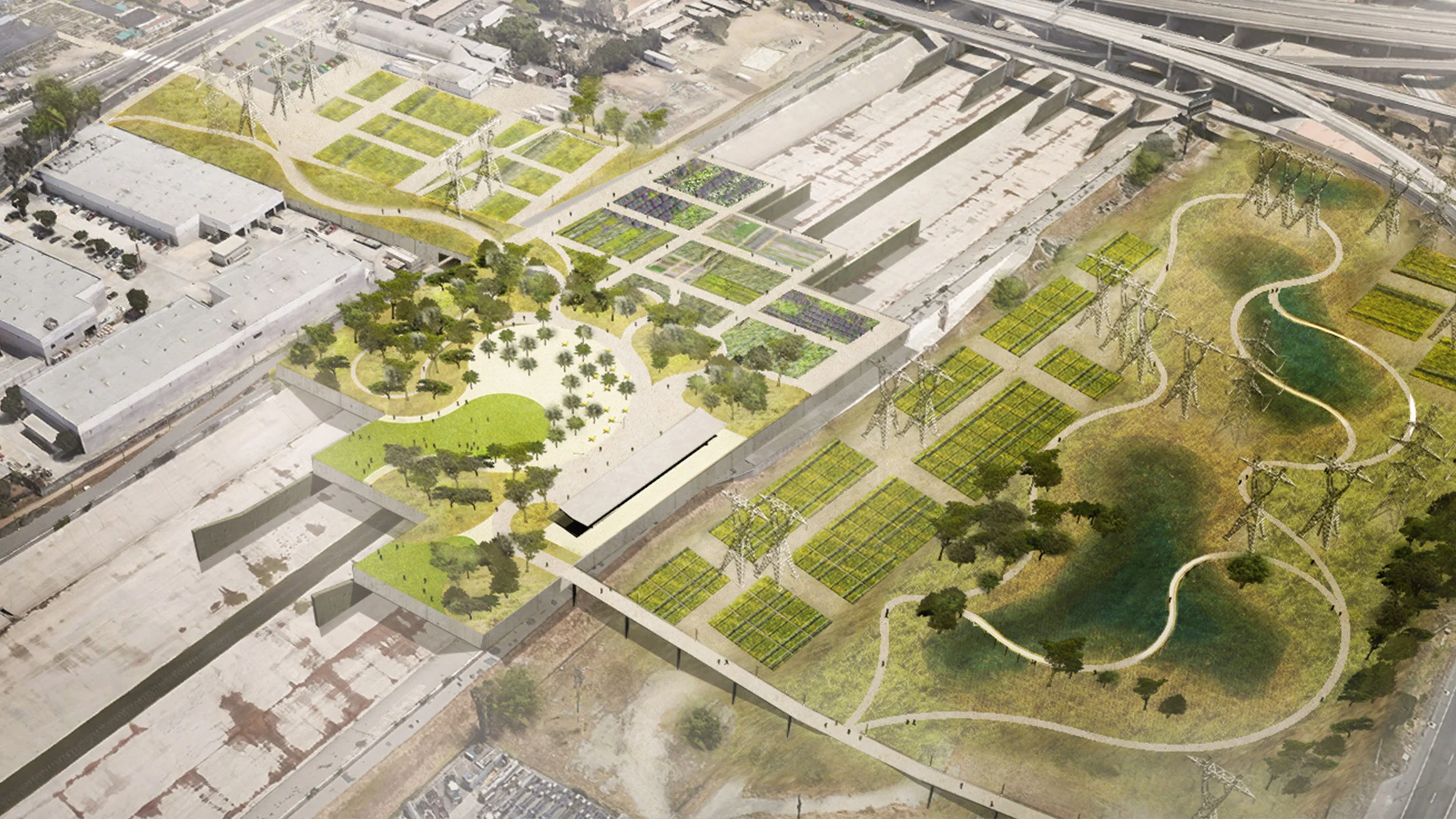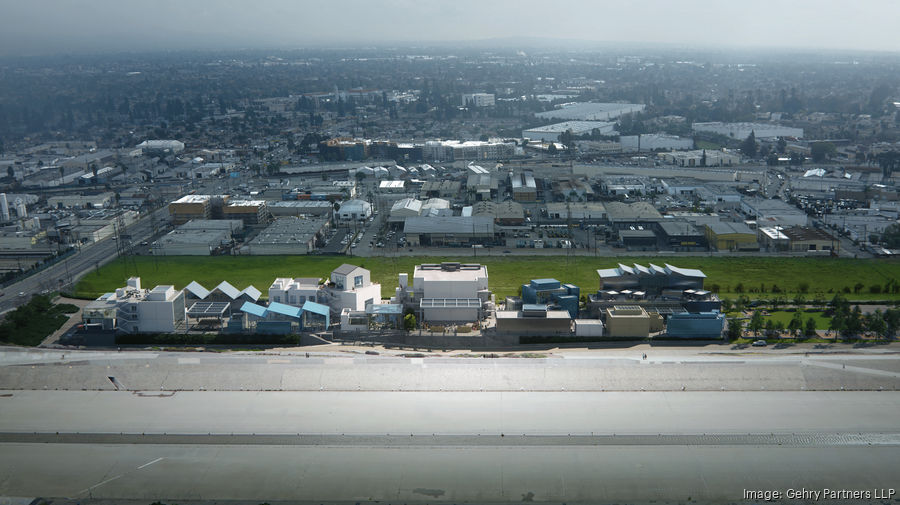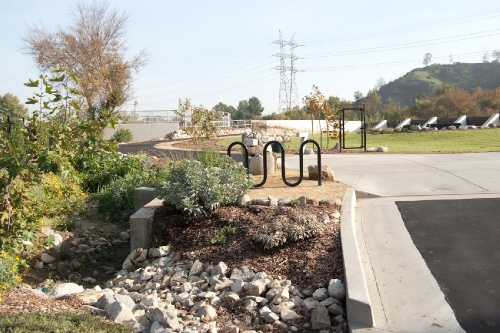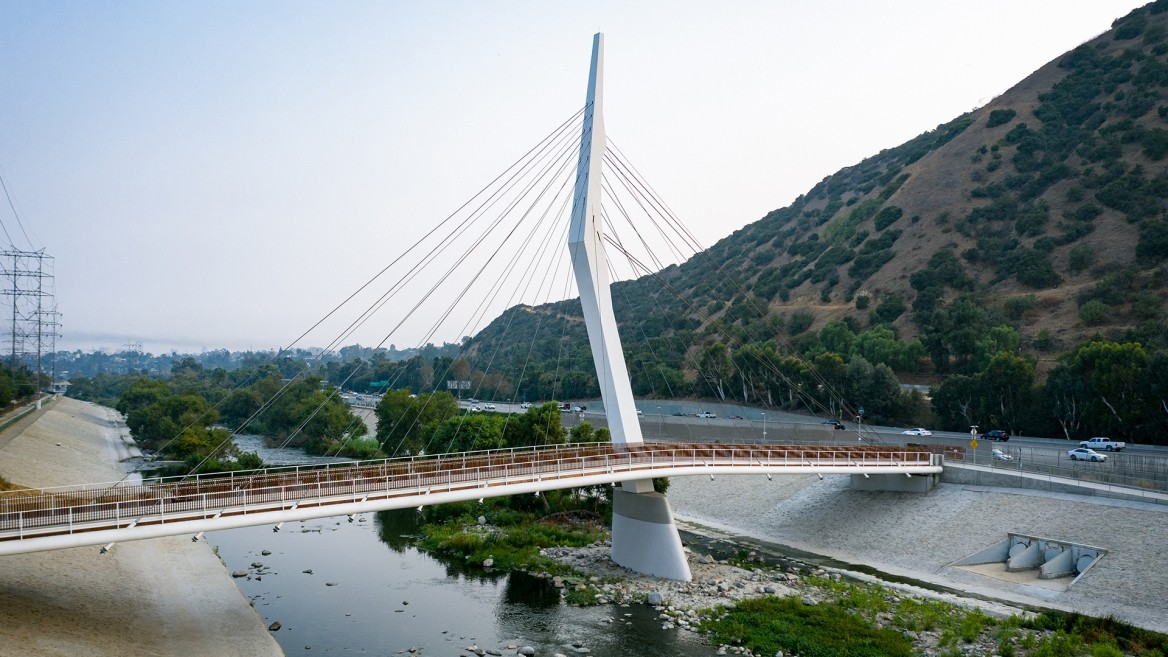
Renowned Architects Propose Ambitious LA River Revitalization Projects
Frank Gehry's Vision
Key LA River Projects
The LA River Master Plan, approved in 2022, includes over 200 potential project sites and an estimated budget of $19-24 billion over 25 years. Key projects include the SELA Cultural Center, a sprawling complex designed by Frank Gehry featuring performance spaces, gardens, and elevated parks above the river in South Gate.
 Proposed SELA Cultural Center in South Gate
Proposed SELA Cultural Center in South Gate
The Proposed SELA Cultural Center in South Gate
The Southeast LA (SELA) Cultural Center is a proposed $150 million arts and cultural hub designed by renowned architect Frank Gehry. It is planned to be built at the confluence of the Los Angeles River and Rio Hondo in South Gate, California. Here are the key details about this ambitious project:
Project Overview
- The 85,000 square-foot complex will feature multiple buildings including a performance hall, music education spaces, recording studios, dance theater, galleries, workshops, cafe, plaza, gardens, and parking.
- It is envisioned as a community-oriented campus with an active "Working Art Street" or "Paseo Cívico" for festivals, events, and artistic activities.
- The project is led by the San Gabriel and Lower Los Angeles Rivers and Mountains Conservancy (RMC) and has secured $124 million in state funding so far, along with additional philanthropic support.
Community Impact
-
Proponents argue it will provide Southeast LA residents, especially youth, with access to arts education, workshops, and cultural programming currently lacking in the area.
-
It is part of the LA River Revitalization Plan aimed at transforming the river corridor and uplifting underserved communities along its path.
-
However, some housing activists fear it could accelerate gentrification and displacement of low-income residents if adequate protections are not in place.
Addressing Gentrification Concerns
-
Community outreach and input have been part of the planning process to identify needs like affordable housing and public transportation access.
-
Local arts leaders view it as an opportunity to shape development by having "a seat at the table."
-
However, scholars warn of the risk of "driving out its target audience" if gentrification is not properly addressed.
The SELA Cultural Center represents a major investment in arts, culture, and community development for Southeast LA. While promising opportunities, concerns about gentrification underscore the need for inclusive planning to ensure the project benefits existing residents.
Another notable proposals include the $20 million Glendale Narrows Riverwalk, funded by the city, state parks, and private philanthropy.
 Glendale Narrows Riverwalk
Glendale Narrows Riverwalk
Glendale Narrows Riverwalk
The Glendale Narrows Riverwalk is a recreational trail and park area along the Los Angeles River in Glendale, California. Here are the key details about this urban river greenway:
Overview
- It is a 0.55 mile long linear park along the east bank of the LA River, stretching from Bette Davis Park to Flower Street.
- The riverwalk features a paved multi-use trail for pedestrians and cyclists, along with amenities like parks, picnic areas, river overlooks, public art installations, and an equestrian facility.
- It opened to the public in phases, with the first section completed in 2012 and additional phases adding more trail length and amenities in subsequent years.
Amenities
- Two small parks with lawns, trees, and landscaping.
- Two non-reservable picnic tables on a first-come, first-served basis.
- Interpretive displays and signage about the river's history and ecology.
- An equestrian facility with a corral for horses.
- Public artworks like sculptures and murals integrated into the design.
Connectivity and Future Plans
- The riverwalk provides pedestrian and bike access to the LA River recreational trail network.
- Glendale has plans for a Phase II extension to add more trail length northward.
- There are proposals to build a pedestrian/bike bridge over the river to connect the riverwalk to Griffith Park on the west side.
The Glendale Narrows Riverwalk has revitalized a stretch of the LA River in Glendale by providing public green space, recreation opportunities, and improved access to the waterway. It is part of ongoing efforts to transform the LA River corridor into an amenity-rich greenway connecting communities.
Planned pedestrian bridge connecting Atwater Village and Griffith Park.
 Pedestrian bridge connecting Atwater Village and Griffith Park
Pedestrian bridge connecting Atwater Village and Griffith Park
Pedestrian bridge connecting Atwater Village and Griffith Park
The North Atwater Bridge is a pedestrian and bicycle bridge currently under construction over the Los Angeles River, connecting Atwater Village on the east side to Griffith Park on the west side. Here are the key details about this project:
Overview
- It is a 325-foot long cable-stayed bridge featuring a 125-foot high mast and steel suspension cables.
- The bridge deck has two 12-foot wide pathways - one for pedestrians/cyclists with a hardwood deck, and another for equestrians with rubber pavers.
- It is part of the Los Angeles River Revitalization Master Plan to improve access and amenities along the LA River corridor.
Purpose
- Provides a safe car-free crossing over the LA River for pedestrians, cyclists, and equestrians to access Griffith Park's trail network from Atwater Village.
- Addresses safety concerns of people previously having to cross the river channel or major roads like Los Feliz Blvd to get to Griffith Park.
- Connects the growing community of Atwater Village to major open spaces and recreational opportunities in Griffith Park.
Construction Status
- Construction began in 2017 after years of planning and securing $16.1 million in funding from city, state, and private sources.
- As of 2019, the tower mast and suspension cable system were in place, with the bridge span structure being assembled.
- The bridge was originally scheduled for completion in 2019 but has faced some delays. An updated timeline was not found.
Public-Private Partnerships
- A $20 million riverwalk in Glendale, jointly funded by the city, state parks, and $4.75 million from philanthropist Morton La Kretz
- A planned food hub in the historic Lincoln Heights Jail, anchored by a vertical farm
- A pedestrian bridge connecting Atwater Village and Griffith Park, designed by Michael Maltzan Architecture
These partnerships combine government resources with private investment to create iconic destinations and amenities along the 51-mile river corridor
Balancing Development and Community Needs
The 2022 LA River Master Plan update seeks to balance these competing priorities by mandating affordable housing in new developments, allocating funds for anti-displacement programs, and ensuring equitable distribution of parks, trails, and facilities. The plan's success will depend on uplifting surrounding communities while delivering architectural marvels.